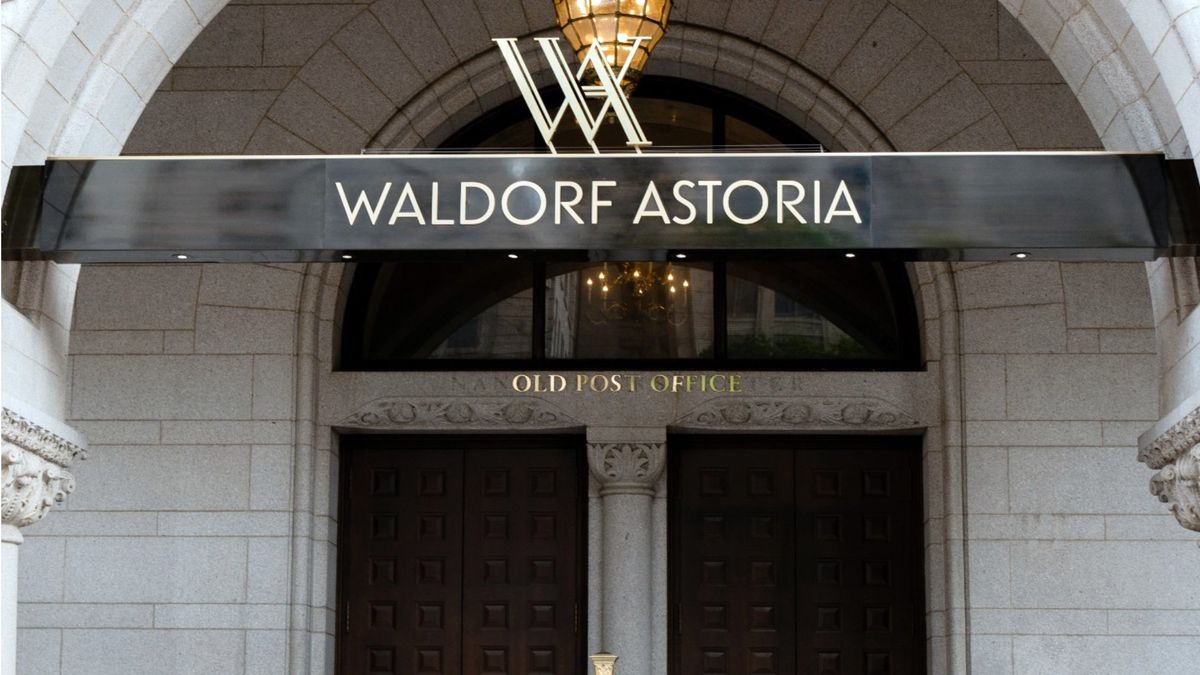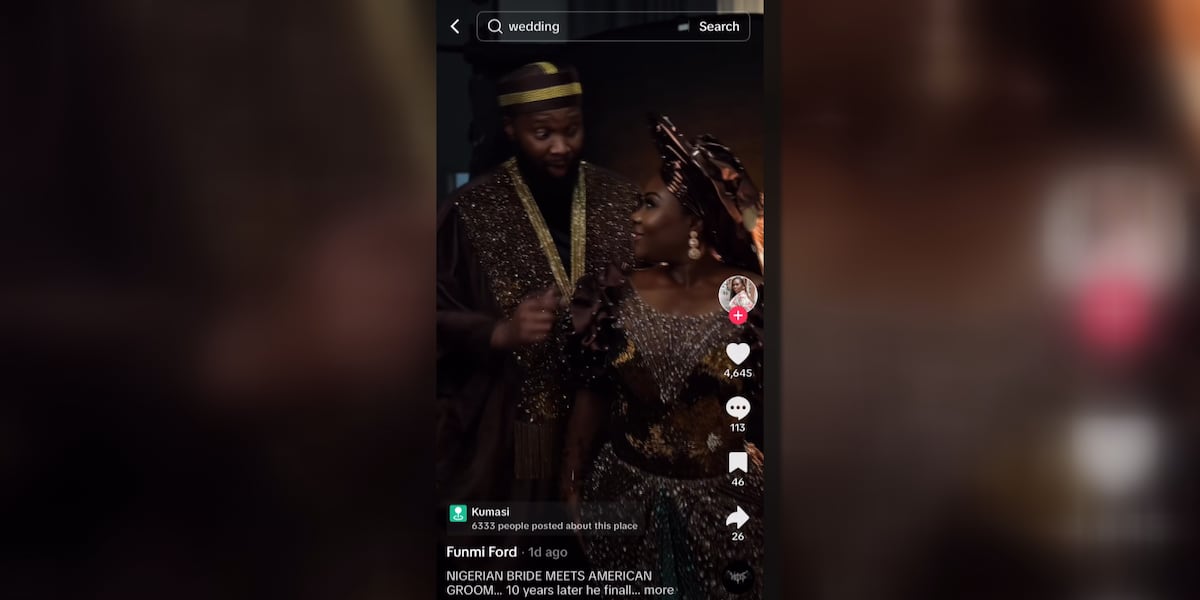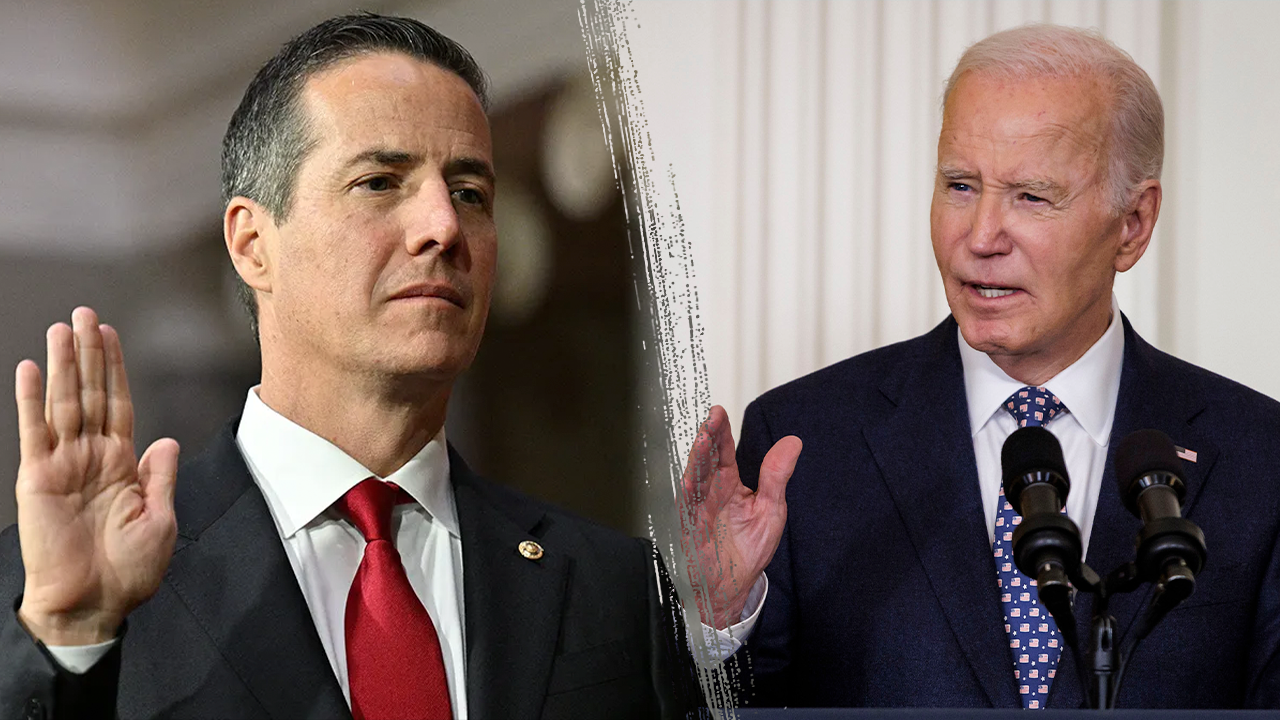New Hampshire
In Their Own Words with George Brown – New Hampshire Magazine

There’s a sign high on the wall inside George Brown’s woodshop at Pinkham Notch Visitor Center that reads “grand juction.”
After 10 years and roughly 600 signs, the missing “n” is simply a reminder for Brown, a member of the Appalachian Mountain Club and official “Sign Maker,” to take his time when carving out the newest directional signs that line New Hampshire’s trails and which keep hikers on the right track.
Brown, along with AMC staff and volunteers, helps maintain about 440 miles of trails in White Mountain National Forest — about 750 trail signs in all. When current signs wear out their welcome, become difficult to read, splinter or get chewed by bears or porcupines, staff and volunteers will note its ID number on its reverse and add it to a continuously updated database. That’s where Brown comes in.
Using a premeasured, pretreated white pine board sourced locally, Brown uses a “signmaking machine” — “I’m sure there’s a fancier name,” he says (it’s a Marlin 3-D Carving Machine) — to make a tiny mark in the wood for character placement. Then the machine helps him carve each character using standardized letters in plastic molds.
After chiseling the message, he squeezes a bit of ordinary house paint — chrome green to be exact — into the grooves, then uses the handle end of a small paintbrush to spread the paint and fill in the carved letters. The rest of the sign receives house paint in white.
Retired signs are returned to the woodshop; each year a few are auctioned off, some for a handsome price.
Here’s an inside look at Brown’s craft.
New Hampshire Magazine: I think it’s always a relief to see one of your signs — then you know you’re in the right place.
George Brown: I look at it like it’s an adventure. And it’s like a discovery as you hike along. And I think when people come to a junction with a sign, it kind of confirms “Oh, yeah, we’re in the right place, at the right time, we hope.”
George Brown examines a damaged, splitting sign that has spent years enduring harsh elements.
NHM: I didn’t realize each sign is numbered.
GB: That’s the actual sign number in the database. There are so many things about trail work that people take for granted — signs being one of them. There’s just a lot of cleaning drainage, building rock walls, brushing the trail and blazing it. A lot of people just don’t know. I can’t fault them.
NHM: How long does it take to make one sign from start to finish for you?
GB: Well, of course, it depends on the number of lines but on average, I would say between an hour and a half to two hours, and that includes layout, which is quite time-consuming. But then you got to spend time putting it together. Sanding it, painting it. And painting the letters, as you can see, is the most time-consuming, because it’s so fine.
NHM: How many coats of paint do they get?
GB: The white is three (coats). One prime, two finish. And the green is just one coat. We always buy top-quality paint, because we don’t want to do those letters twice. Once is enough.
NHM: These signs seem very consistent. Who came up with this style?
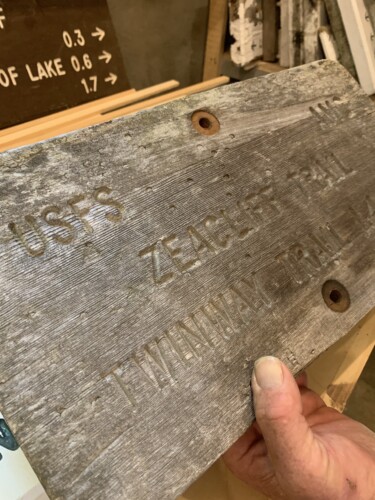
This wooden sign that was stationed on the Zeacliff Trail has a layer of patina from its time outdoors.
GB: These standards come from the owner of the White Mountain National Forest, which is the United States Forest Service. Most of the time making a sign is spent laying it out to make sure the trail name gets centered and that the text is all the way to the left and right like it’s supposed to be.
NHM: Do the distances on the signs ever need to be adjusted?
GB: Whenever I make a sign, I refer to the White Mountain Guide. You’ve seen that big thick volume? It tells me exactly where this sign is. I’ll look in the guide and make sure the distance is correct. Chances are, in fact, if you see any sign that is this thickness — five-quarter inch — it was one that I made.
NHM: How often are the signs replaced?
GB: I’m guessing 10 years, maximum 15. Ones that are in a somewhat sheltered location — this one is right around Lincoln Woods — this one will probably last 12 to 15 years, I bet.
NHM: What happens to the old, wornout signs?
GB: Every year, the AMC Trails Department will auction these off. It’s kind of fun to watch it. Someone paid like $1,800 last year (for one). I bet this one will get close to, if not more than, $1,800, because it was in the alpine zone. Anything that is above treeline and gets exposed to that kind of weather, which can be horrific, (is more valuable).
NHM: How long will you continue to do this?
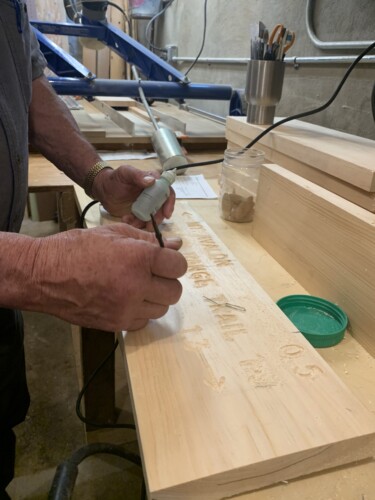
Brown uses locally sourced, treated white pine as he measures the proper distances between characters.
GB: As long as I can, as long as they want me to. I really enjoy it. It’s a great job. There’s always a challenge, but you do have to think through laying things out and spacing and checking the text to make sure it’s accurate.
NHM: Do you ever get bored with this job?
GB: No, it’s a fun gig. I get to work here at Pinkham. … And it’s a great community here of staff that you get to know pretty well. I’ve got two golden retrievers, and they’ve got many friends here that come in and say hi.
NHM: I came across a picture of you hiking, and you had a new sign in your backpack. Do you always replace them?
GB: No, I used to put some up. But my knees really started bothering me lately. It’s just real hard for me to get there, and I miss it horribly. There’s a seasonal staff person who puts signs up, but he also has a team of volunteers that puts signs up and also help with the inventory and assess trail conditions.
NHM: Do you still go hiking?
GB: I do. I maintain the trail over in Evans Notch. I call it the undiscovered gem of the White Mountain National Forest. I look after the lower part of Royce Trail — the first mile follows a cold river stream. And of course, the dogs love it.
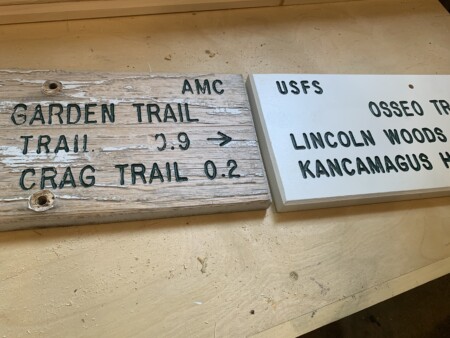
A new sign with chrome green paint in the letters awaits its marching orders.
NHM: That trail’s not too difficult?
GB: I was done by the end of the day. Because there’s a 2,000-foot elevation gain. So yeah, I still get out there, but I can’t do the 4,000-footers. I was on Emerald Bluff, a 2.4 mile hike along Israel Ridge Trail and Emerald Trail, a couple years ago, and I came to this beautiful outlook of Castle Ravine. And I had this real deep sense of remorse that I can’t do this anymore. And yet, right after that I said, “You know what, I feel just great that I was able to, that I can say that I did that.”

New Hampshire
Crash impacts traffic on I-95 northbound in NH

New Hampshire State Police responded to a crash Friday evening on Interstate 95 northbound in Portsmouth.
The crash happened near Exit 5 and closed the highway in the northbound direction, but police said around 7:45 p.m. that one lane had reopened.
Authorities did not have any word on injuries.
Drivers are being asked to avoid the area if possible. Delays and detours are expected.
No further details were immediately available.
New Hampshire
NH Butterfly Monitoring Network Offers Online Trainings

CONTACT:
Heidi Holman, NH Fish and Game: 603-271-2461
Haley Andreozzi, UNH Cooperative Extension: (603) 862-5327
January 10, 2025
Concord, NH — Butterflies serve as important biodiversity indicators for ecosystem health and provide food for many speciess, such as migrating birds. There are more than 100 typess of butterflies in New Hampshire, but data on their presence and distribution is limited. With butterflies using forests, fields, wetlands, and backyards all over the state, volunteer observations are critical to providing a landscape view of these species.
A five-part online training series hosted by the NH Butterfly Monitoring Network will provide information on butterflies in New Hampshire, butterfly biology and identification, and how to get involved with the Network. The NH Butterfly Monitoring Network is a collaborative effort with a goal of engaging volunteers in counting and identifying butterflies across New Hampshire. Data collected by volunteers can contribute to the understanding of long-term trends in butterfly populations and inform conservation actions for both common and declining species.
Webinars in the series will include:
February 12, 6:30–7:30 p.m.: Intro to New Hampshire Butterflies
Mark Ellingwood, Wildlife Biologist and Volunteer with the Harris Center for Conservation Education
February 26, 6:30–7:30 p.m.: Wetland Butterflies of New Hampshire
Rick Van de Poll, Ecologist and Certified Wetland Scientist
March 12, 6:30–7:30 p.m.: Butterflying New Hampshire’s Woodlands
Levi Burford, Coordinator of the Errol Butterfly Count
March 26, 6:30–7:30 p.m.: Identifying New Hampshire’s Grassland Butterflies
Amy Highstrom, Coordinator of the Lake Sunapee Butterfly Count, and Vanessa Johnson, NH Audubon
April 9, 6:30–7:30 p.m.: Become a Volunteer Guide with NH Butterfly Monitoring Network
Haley Andreozzi, UNH Extension
All butterfly enthusiasts are welcome, with or without prior experience. For more information and to register for the session(s) you are interested in, visit nhbutterflies.org.
The NH Butterfly Monitoring Network is led by the NH Fish and Game Department and UNH Cooperative Extension with collaboration from partners statewide, including NH Audubon, Tin Mountain Conservation Center, the Harris Center for Conservation Education, and Ausbon Sargent Land Preservation Trust.
New Hampshire
Cooper scores 20, UAlbany beats New Hampshire

Posted:
Updated:
ALBANY, NY (NEWS10) — A strong second half powered the UAlbany women’s basketball team to their third conference victory in as many contests on Thursday night.
COACH COLLEEN MULLEN: “To start the game, New Hampshire had great defensive intensity and pace. Once we settled in and started moving the ball, we were able to capitalize with our inside-out game. In the second half, we had solid offensive execution and grinded out multiple defensive stops. This was a great team win on both ends.”
KEY STATS
- Graduate student Kayla Cooper led the team with 20 points, six rebounds, three steals, and three assists while shooting over 50% from the field.
- Fellow graduate student Jessica Tomasetti followed with nine points and five rebounds. The point guard also shot 50% from the field.
- Junior Gabriela Falcao tallied a team-high two blocks.
- As a team, the Great Danes totaled nine steals with 19 points off turnovers.
- The UAlbany defense did not allow any singular Wildcat to surpass seven points.
HOW IT HAPPENED
- Graduate student Lilly Phillips scored the first basket of the game after a combined four scoreless possessions.
- That defensive nature continued throughout the rest of the half.
- New Hampshire gained a 9-5 lead within four minutes of action but the Great Danes quickly answered to tie the score in the next two minutes.
- UAlbany ended the quarter with a one-possession advantage, 14-11.
- Throughout the second quarter, the Great Danes allowed just two field goals for five Wildcat points.
- Four different Great Danes scored in a defensive quarter to make it a 24-16 game at halftime.
- The second half was a different game – UAlbany nearly doubled its score from the first half in the third quarter alone.
- The Great Danes began the third with a 12-2 scoring run. Ten of those points were scored in just two minutes and 23 seconds.
- Kayla Cooper and Jessica Tomasetti combined to score 10 additional points and close the third quarter with a 22-point advantage, 46-24.
- Cooper and Tomasetti scored all but three of the 22 points in the third quarter. Cooper tallied 12 alone.
- Following two fourth-quarter layups from senior Laycee Drake and Phillips, the Great Danes held a 26-point lead.
- UAlbany continued to extend their lead throughout the next seven minutes of action. The largest lead of the contest came with 1:24 left – 29 points (59-30).
- The Wildcats got the final say to make it a 27-point decision, 59-32.
NEXT: The Great Danes will close out the week at home against Maine on Saturday (Jan. 11).
-

 Business1 week ago
Business1 week agoThese are the top 7 issues facing the struggling restaurant industry in 2025
-

 Culture1 week ago
Culture1 week agoThe 25 worst losses in college football history, including Baylor’s 2024 entry at Colorado
-

 Sports1 week ago
Sports1 week agoThe top out-of-contract players available as free transfers: Kimmich, De Bruyne, Van Dijk…
-

 Politics1 week ago
Politics1 week agoNew Orleans attacker had 'remote detonator' for explosives in French Quarter, Biden says
-

 Politics1 week ago
Politics1 week agoCarter's judicial picks reshaped the federal bench across the country
-

 Politics6 days ago
Politics6 days agoWho Are the Recipients of the Presidential Medal of Freedom?
-

 Health5 days ago
Health5 days agoOzempic ‘microdosing’ is the new weight-loss trend: Should you try it?
-

 World1 week ago
World1 week agoIvory Coast says French troops to leave country after decades

